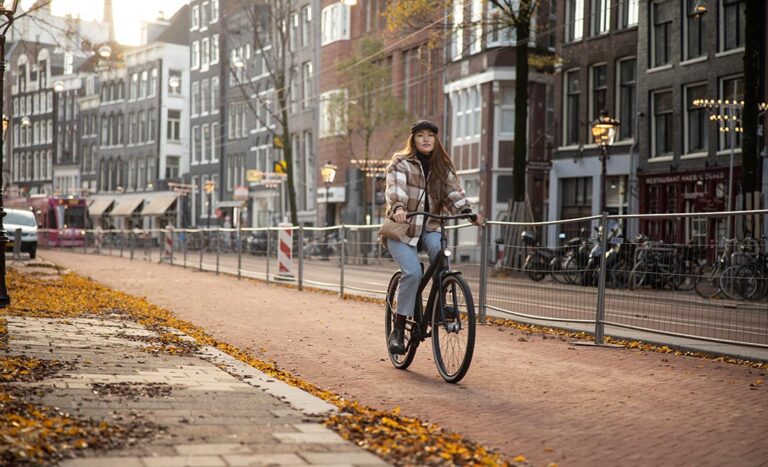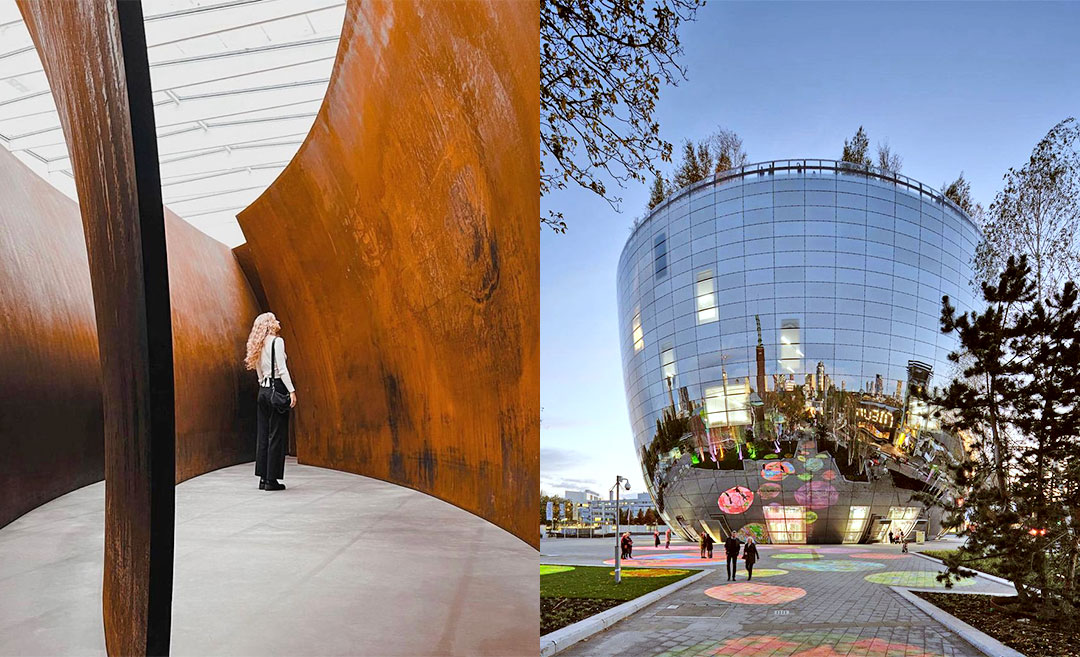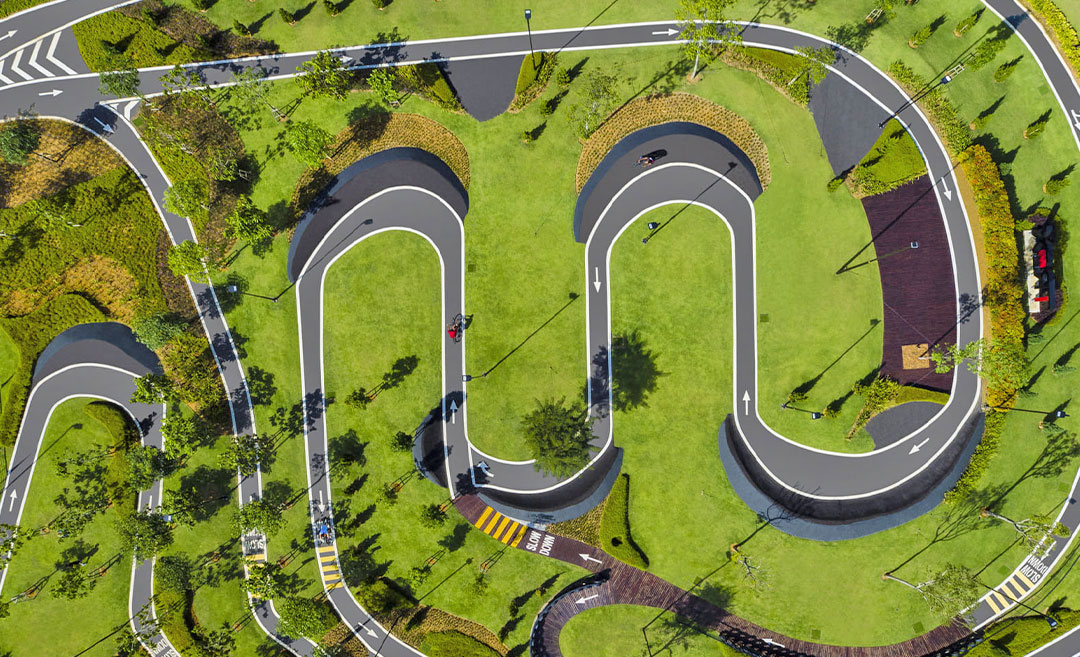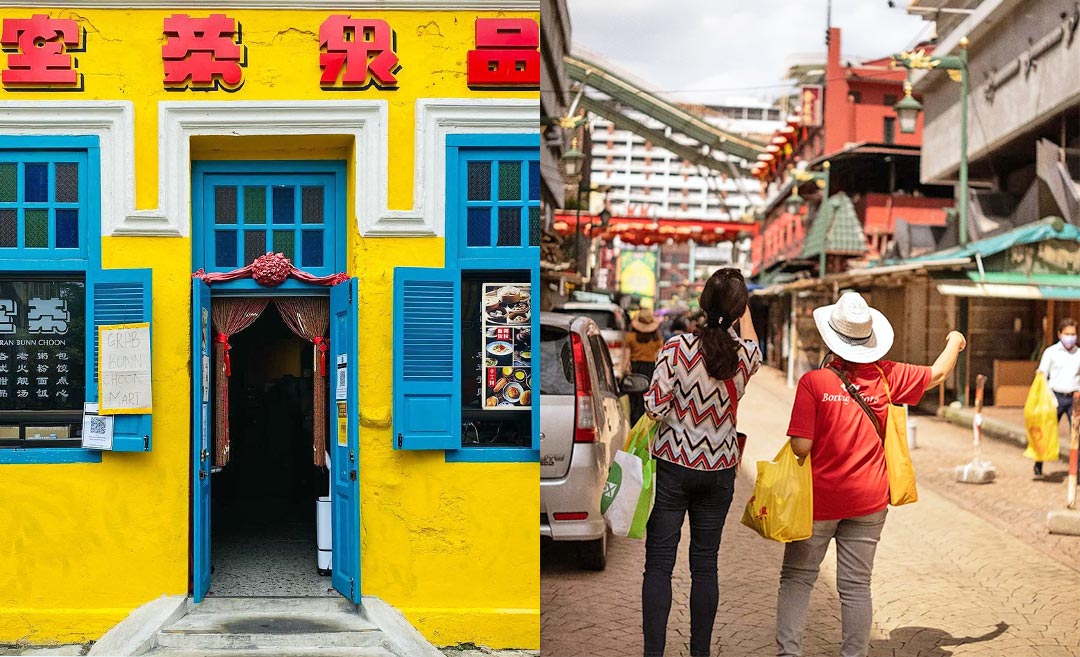When I first moved to the Netherlands, I knew I had to experience the ultimate Dutch mode of transportation – cycling! There’s no better way to immerse yourself in the local culture than to explore the city on a bicycle, and speaking from personal experience, it’s something you should take advantage of.
The Netherlands lives up to its cycling-friendly reputation, as it is home to more bicycles than people! Biking around here is a secure mode of transportation that allows you to reach your destination faster than walking. Plus, it’s a great way to get some cardio exercise.
With cycling being such a big part of daily life here, there are strict rules and customs you should be aware of to stay safe and avoid common mistakes tourists make. Let’s get right to it!
1. Always use the designated lanes
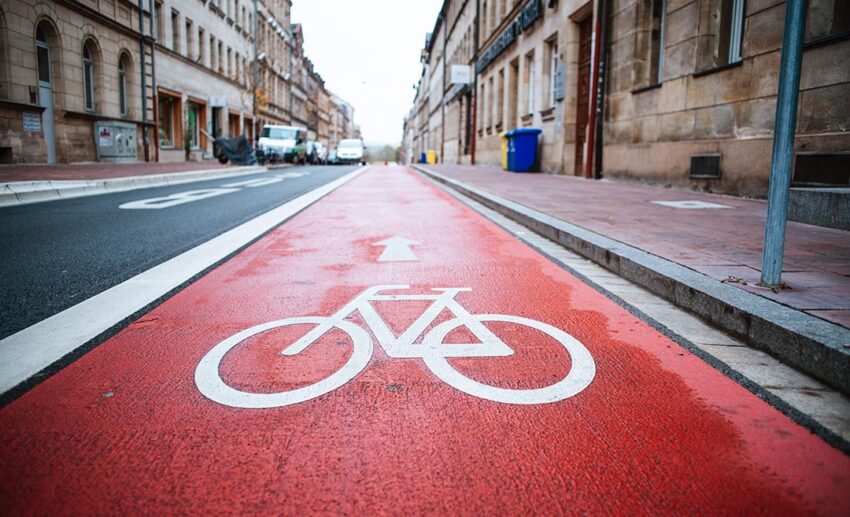
You can find designated bike lanes almost everywhere, even next to highways. The bike lanes are typically surfaced with red asphalt or indicated with a bicycle sign on the road with a white painted line.
However, there may be situations where you won’t find a designated bike lane, such as on a one-way canal street. In this case, cars and cyclists co-exist; cars must slow down, and cyclists should maintain on the right side, letting cars pass through on your left.
2. Helmet is not mandatory
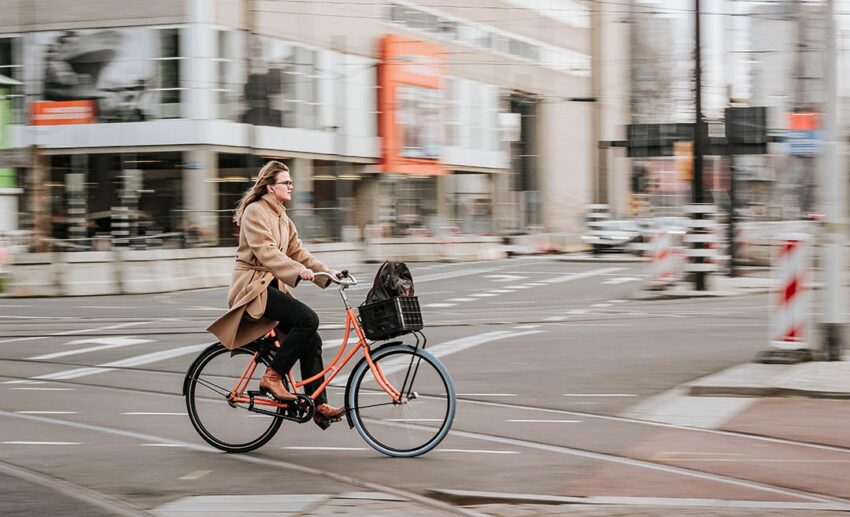
In this country, it’s normal to see cyclists without helmets, except for road-racing bikers, but it is important to note that a helmet can protect riders from the dangers of cycling. However, thanks to the well-designed and thought-out infrastructure, cycling in the Netherlands is anything but dangerous, but that doesn’t mean accidents can’t happen.
Good general awareness and respect are given to cyclists, making it relatively safe to cycle without a helmet – even for children, though it is not something I condone. However, if you feel safer with a helmet, you are more than welcome but know that it is not mandatory.
3. Be cautious on tram tracks
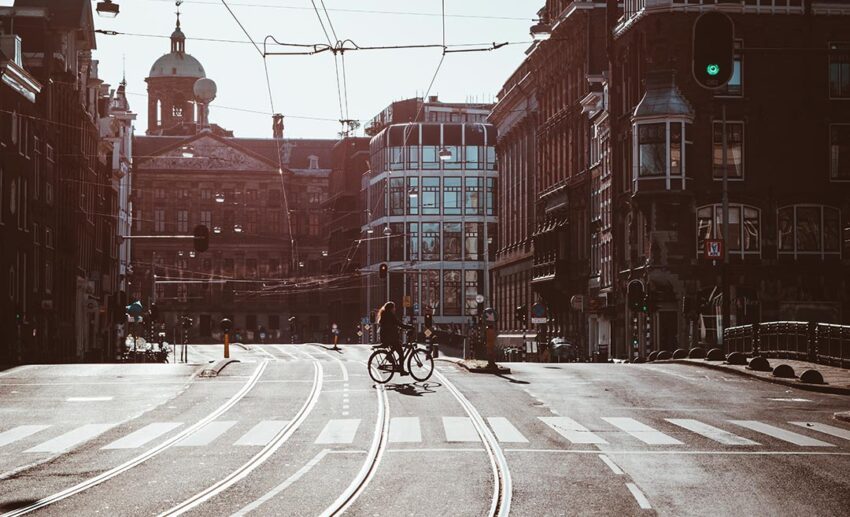
Tram tracks are a common sight throughout the cities of the Netherlands. When crossing a tram line, always do so at a right angle and not parallel to them, as the narrow wheels of bikes can easily get in between the tracks, causing cyclists to lose balance.
This is a common leading cause of bike fall incidents; I had to learn it the hard way, but thankfully, I escaped with a slight bruise on my knee.
4.Do not use the phone while cycling

While cycling, you might stumble on a beautiful street and feel tempted to take your phone out and snap a photo or a video. But beware, using a phone while riding is illegal and can result in a €140 fine! If you want to take pictures, stop at a safe area, and do not obstruct other cyclists.
The same applies to holding your phone while looking for directions on maps. Instead of holding your phone in one hand, bring along a phone holder for the bike or use the audio assistance to guide you.
5. Always indicate when turning and use the bell for alert
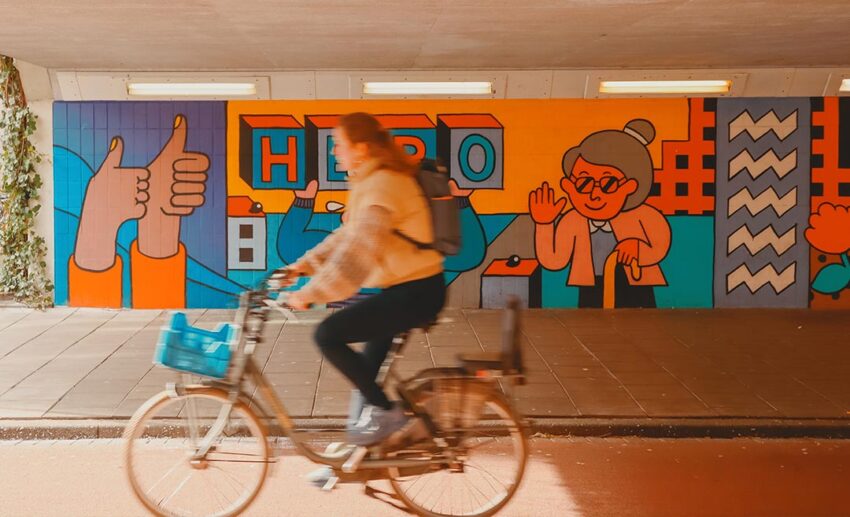
City bikers in the Netherlands are not shy to use their bell; you will hear the aggressive sound of “Kring! Kring! Kring!” if you accidentally find yourself walking on a bike path – especially in Amsterdam. If you need to pass a rider in front of you or notify a group of pedestrians blocking the bike lane, using a bell can be helpful.
Remember to use hand signals when turning and ring your bell to let others know where you’re headed. This is important to keep everyone safe on the road! If you make a sudden turn without indicating with your hand – you may get a few dirty looks or, even worse, a fine of €40 for not indicating direction.
6. Lock and park your bike properly
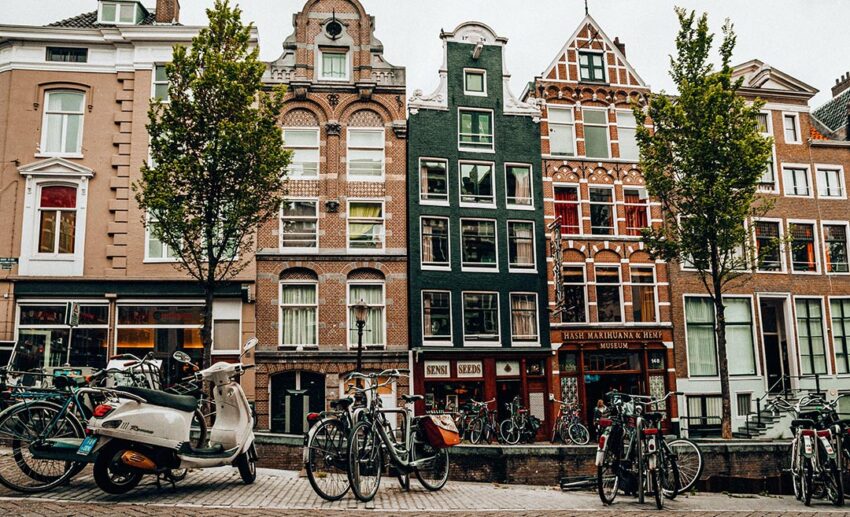
Despite having more bikes than people in a country, bike theft is a common problem in The Netherlands, with an estimated 700,000 bikes stolen each year! Since cycling is a popular mode of transportation for daily commutes, there is a great demand for affordable second-hand bikes.
It’s crucial to always lock your bike securely using a strong lock and locking both the wheels and frame to fixed objects; this will help prevent theft. Avoid parking your bike in secluded places, and make sure to look for proper signage that is designated for bike parking.
It’s common to find two-tier racks in most bike parking spaces, as they can store more bikes. You are lucky if you can find a space in the bottom tier, as putting a bike on the second tier requires more work and upper body strength. But hey, strength training isn’t always a bad thing.
Avoid locking your bike to lamp posts, fences, or other objects, as this may result in your bicycle being towed away. Once that happens, you can only retrieve it after paying the fine.
7. Understand the cycling traffic rules and priority
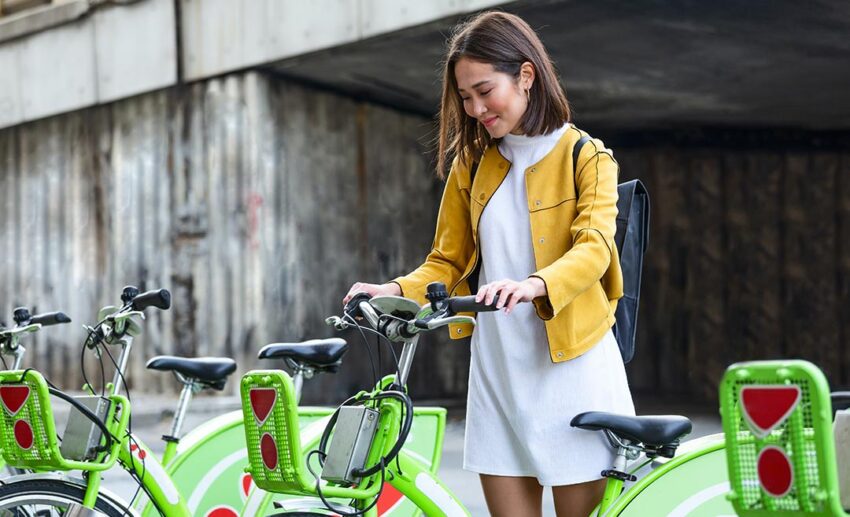
As a cyclist in The Netherlands, knowing some general traffic rules is important. Here are a few to keep in mind:
- Pedestrians always have the right of way at zebra crossings on bike lanes. Cyclists must yield until the crossing is clear.
- Cyclists must come to a complete stop and give way to any vehicles or pedestrians crossing the road when they encounter shark-teeth markings on a bike lane.
- When a bike lane carries on at an intersection without a stop sign, cyclists have priority, while cars must give way. However, slow down and be cautious of any oncoming vehicles before crossing.
- When entering a roundabout, cars must yield to any cyclist already on the roundabout. When exiting, signal with your right arm and check for any bikes approaching from your right.
- Always overtake other cyclists from the left side, never from the right.
- Please turn on your front and rear bicycle lights during the evening; the red light should be turned on at the back. Not having a functional light can also lead to a fine.
General advice for cycling in the Netherlands:
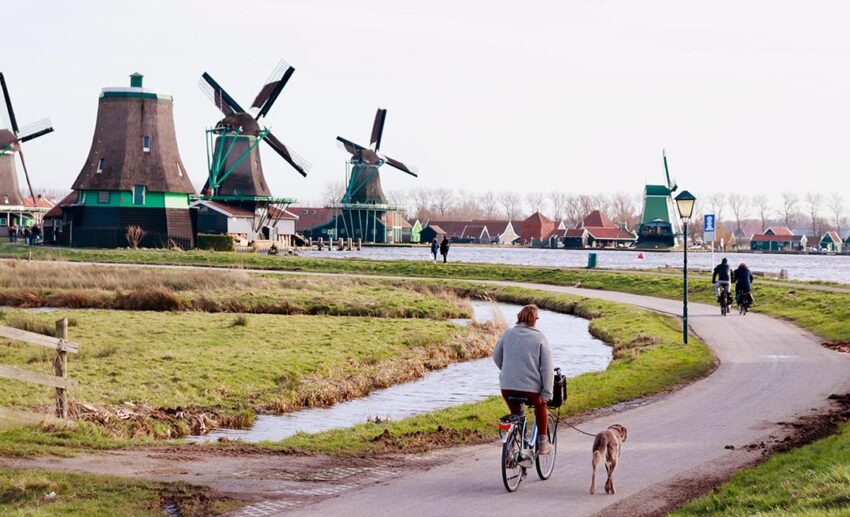
Always bring a raincoat or waterproof jacket
On average, it rains around 130 days per year in the Netherlands. Pack a waterproof jacket or raincoat with you to ensure you don’t get wet whilst cycling – the weather can change from sunny to rainy in a matter of seconds.
Cycling in the city vs the countryside
If you are not used to cycling in a busy city like Amsterdam, starting with a guided bike tour is best. Cycling in the city can be chaotic, with the crowds of people, cars, and trams, which may result in an overstimulating experience.
For a more relaxing cycling experience, you can cycle around in the countryside, smaller cities, or national parks. You can relax and avoid all the chaos by doing it this way.
Always be alert while cycling
As safe as cycling can be in the Netherlands, always be alert of your surroundings, especially in the city. Watch out for pedestrians, tram tracks, and traffic signs. With a bit of caution and common sense, you’ll be able to have a fun cycling experience The Netherlands has to offer!

